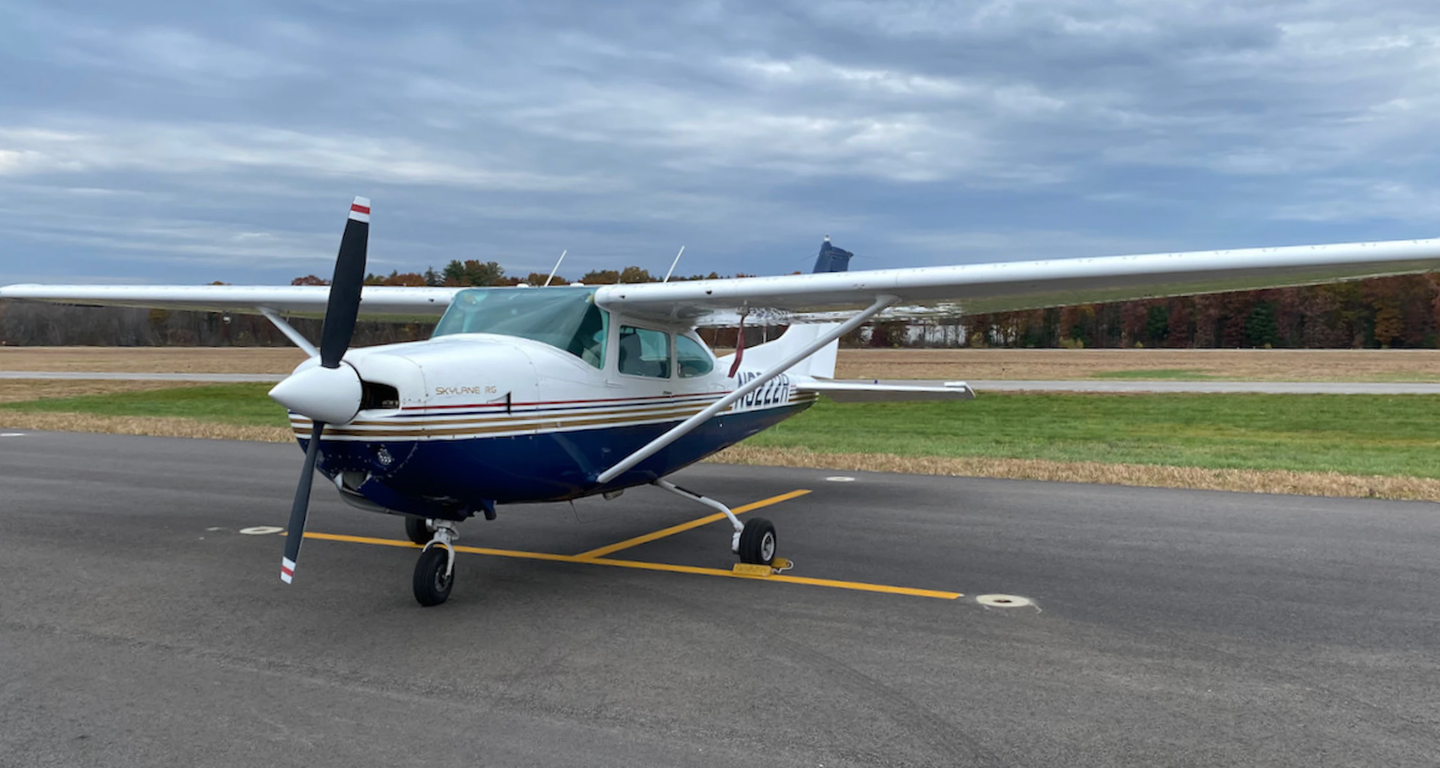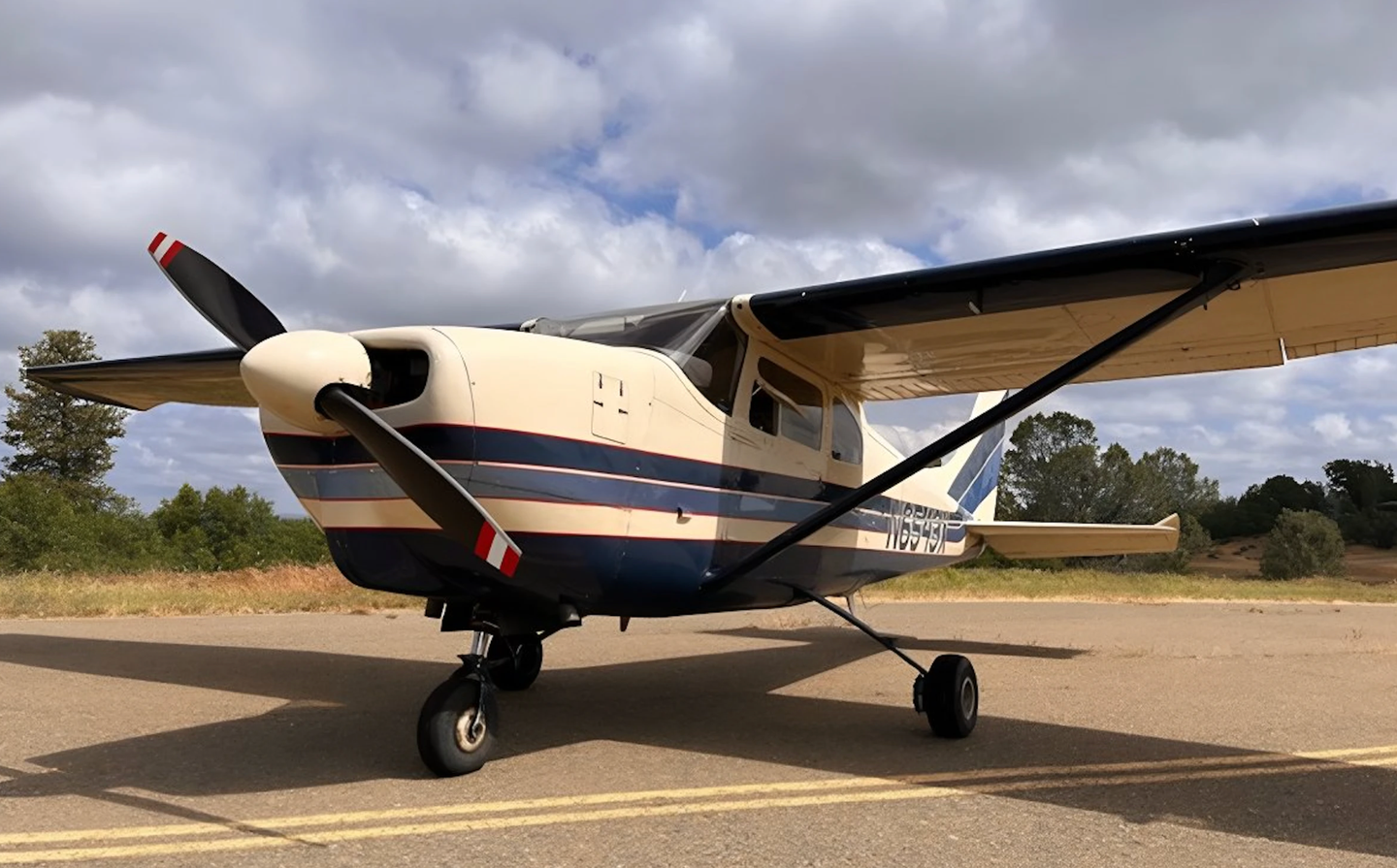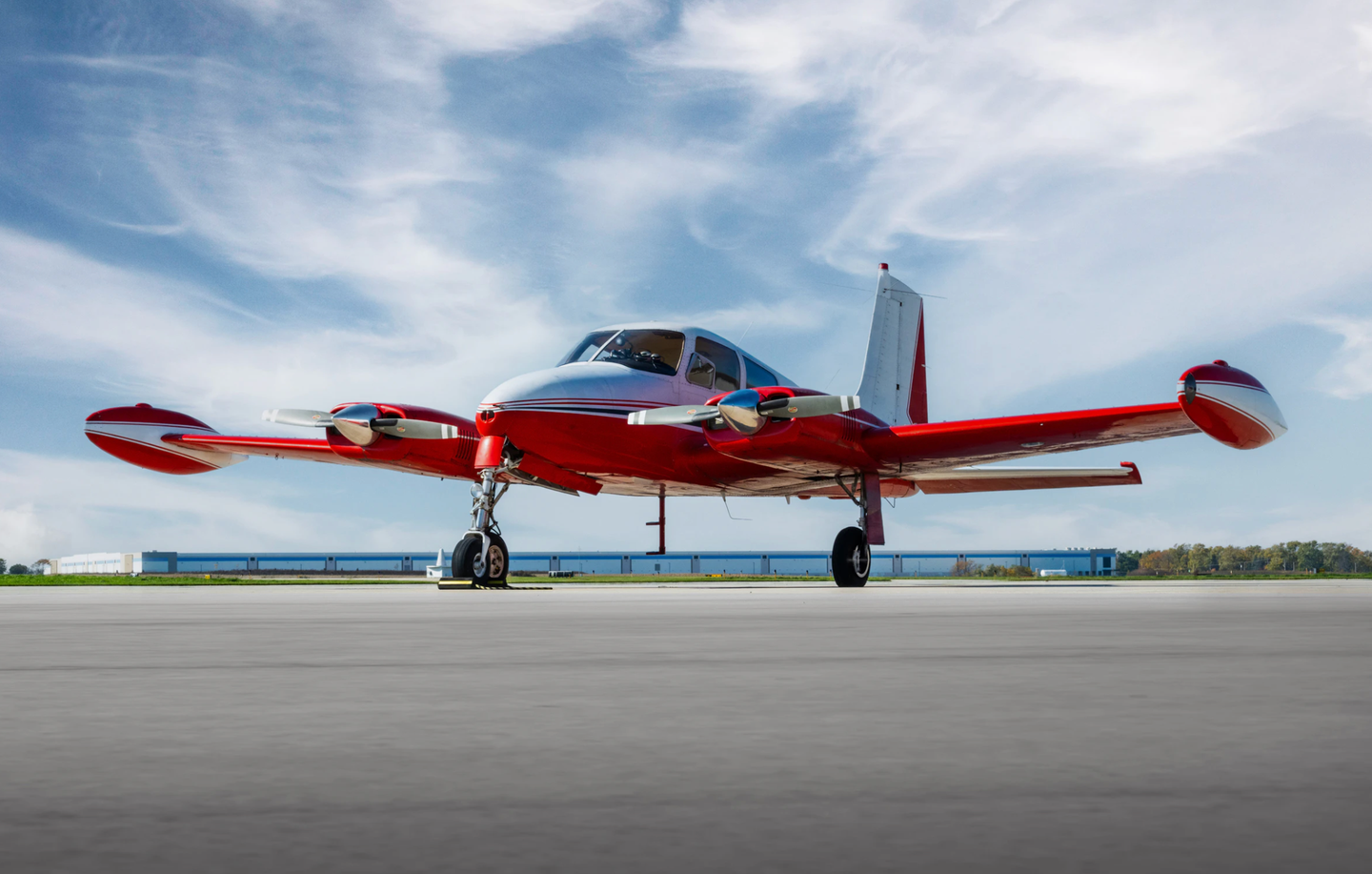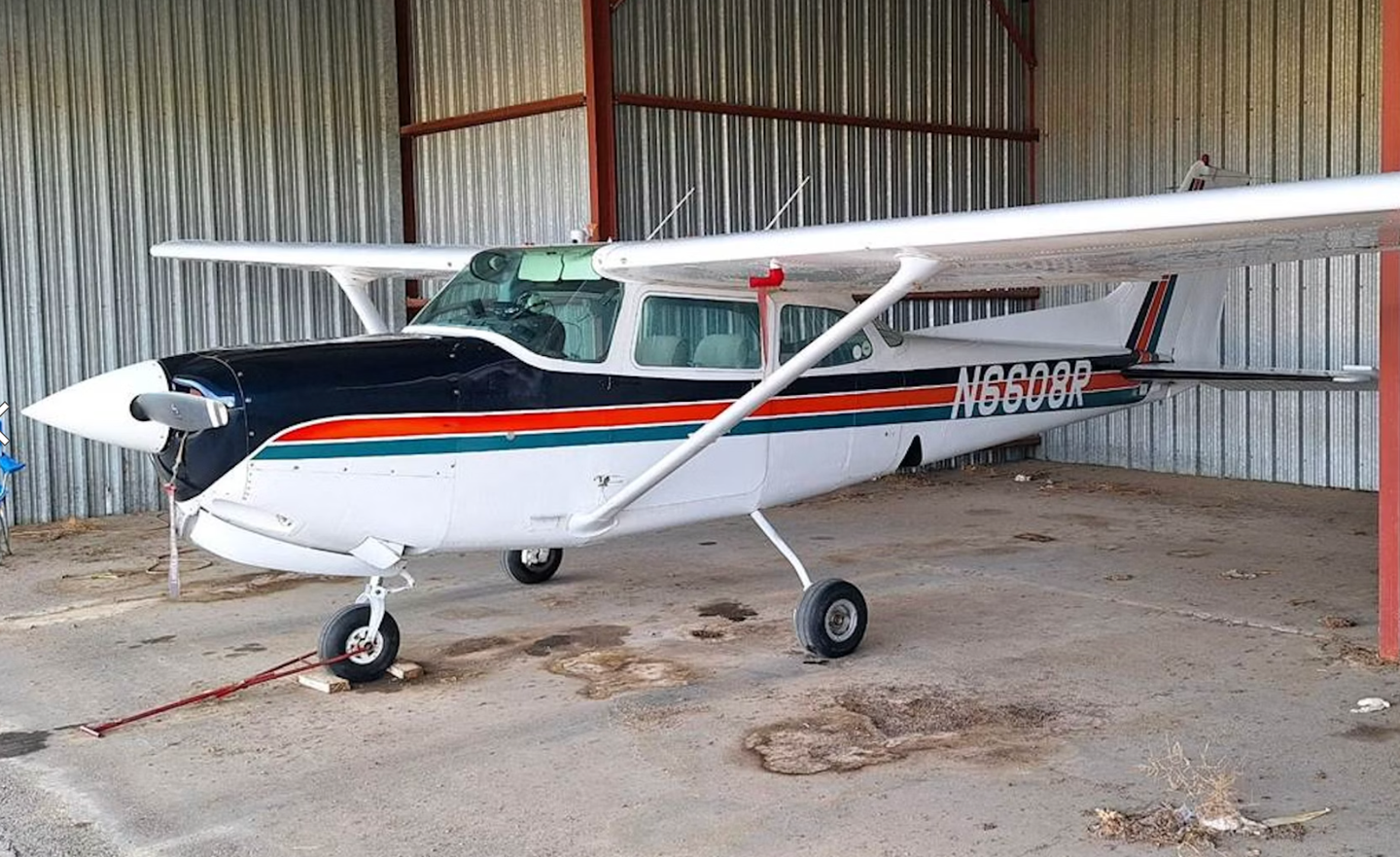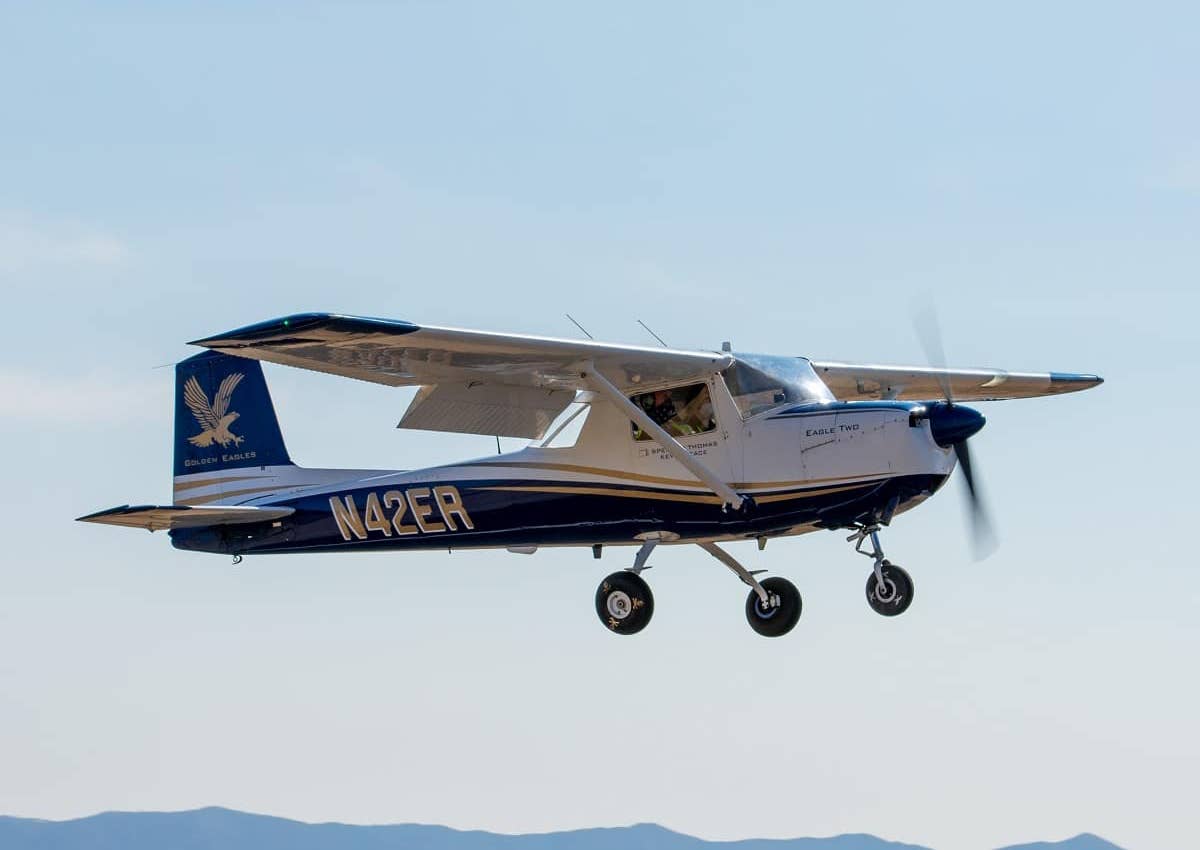Cessna Citation M2: Still The One
Is the oldest entry-level bizjet still best in class?
I'll cut to the chase and start with the question that so many people in the market for a first light bizjet ask: Why would anyone not buy a HondaJet? Based on the response of the market, perhaps the biggest reason is the Cessna Citation M2, which while not quite as fast or as roomy as the new kid on the block, has no shortage of other crucial advantages.
For the record, and this is something that everyone in the market for one of these jets knows, there are three competitors in what's known as the entry-level bizjet segment: the HondaJet, the Embraer Phenom 100 EV and the Cessna Citation M2. All are Part 23 single-pilot-eligible airplanes, all have the Garmin G3000 touch-controlled avionics suite, all of them tip the scales at around 10,500 pounds max takeoff weight, and all of them cost about the same, around $5 million, once all is said and done. The experience of owning and operating every one of them will be similar. You'll carry about as much of a payload, go to pretty much the same airports, file the same kinds of flight plans and take up about as much room in the hangar.
All of these things being true, and they are, when you spend this much for a new plane, you go into the buying decision wanting to see the fine distinctions. Often these are about just a few really important things, things that go into the experience, both long-term and short, of owning a jet. These are: money, performance/comfort and reliability/security. Different prospects will weigh these categories differently. For some, it's all about performance. For others, it's all about the cost of ownership. As with many things in life, outward and inward beauty don't always go hand in hand.
In the case of these three entry-level jets, the same kinds of considerations come into effect; only the distinctions between the three players are pretty fine. The performance deltas between the Phenom 100, Citation M2 and HondaJet aren't great. The HondaJet, at a top speed of around 420 knots, is about 15 knots faster than both the M2 and the emerging version of the Phenom 100, designated the EV, which is not yet available. The range differences are even slimmer, and the economics---purchase price and operating costs---are either very close or hard to determine or, in many cases, both. (Support and long-term maintenance cost certainty considerations strongly favor the Cessna and Embraer products.)
So, back to that first question: Why not just buy a HondaJet? After all, it's the fastest entry-level bizjet and the most fuel-efficient. It has the most legroom and the best lav. And it has the quietest cabin. Done deal, right?
By now, it's clear that it's not such an easy call after all. It's fair to say the HondaJet comes out on top by a nose on the speed and comfort questions, but that's hardly the measure of a jet.
One organization's publication---I don't think I have to spell it out---even came out and said on its cover that the HondaJet is best in class. We disagree. It's in the conversation, sure, but making that kind of categorical statement about an airplane that's brand new and is only better in a couple of categories, and marginally better at that, is missing the point. Before you make such a claim, you need to look at the whole ownership experience and not just the outward veneer of it.
Citation M2
Which brings us to the subject of this story, the Cessna Citation M2.
It was just a few years back that Cessna launched the M2, an airplane I'm always tempted to refer to not as "the" M2, but simply "M2," kind of like "Concorde." Cessna developed the "new" jet quietly. I was there in Wichita when it was launched, and it really was a mystery to the press. No one knew anything other than the "new" product was a light jet.
Well, it turned out it really was new, and it really wasn't. The airplane wasn't a new model at all, but a major overhaul of the entry-level version of the company's CitationJet (the Model 525). That's a very good thing. When it burst onto the scene in 1990, the CJ, as it's called everywhere, was a game changer, an airplane whose scale, economics of operation and easy single-pilot flyability were just right for the entry-level jet niche. Its new engines, the Williams FJ-44 turbofans, were a central part of the airplane's design, giving it good thrust at light weight and, as it turned out, great reliability, too.
The engine has since been developed into many new dash numbers, some of them powering much larger airplanes than the CJ. The kind of confidence and cost assurance that trusted and time-proven engines give a new owner is a hard value to quantify. The direct operating costs of the new engines in the HondaJet are low---the engines are remarkably efficient---but the engines are brand new, too. With a 5,000-hour TBO, the Williams FJ-44s are a known quantity. When it comes to cost of ownership, that's a value you can literally take to the bank. Time will tell for the GE-Honda engines that power the HondaJet.
Now, over time Cessna developed spin-offs of the hugely successful CJ, including up to the CJ4, an airplane 50 knots faster, with twice as much range, a cabin seven-and-a-half-feet longer and room for four more passengers. The entry-level model, the original CJ, became the CJ1 and then the CJ1+.
"The M2 is part of a heritage that helped define what a light single-pilot jet is supposed to fly like."
But the M2 wasn't just a warmed-over 525. In many ways, in fact, it lived up to the new airplane treatment Cessna was giving it. The M2's designers went after the big-ticket items for the owner's experience, speed, range, cabin and avionics, and left the foundation of the airplane largely alone. That meant the engines were the same---though they got a slight paperwork increase in power---and the airframe, its control system and underlying systems were retained. The one exception is perhaps a stylistic one, the small winglets that add a few inches of span, but probably do little to change performance. Apart from that, the airframe from nose to tail is a CJ. And there's a lot to be said for not messing with something that's been working really well for a long time.
There were big changes, however, and they were big indeed, the most noteworthy being the addition of the Garmin G3000 touch-controlled avionics suite, which is the avionics package of choice in this market niche, though Cessna was there years before its competitors. In the M2, the system has three landscape-format screens and a pair of touch controllers below them on the pedestal. The flight control and multifunction standby instrument are on the glareshield.
Standard features include the Garmin flight management system with dual WAAS-enabled GPS, digital color radar, dual AHRS and air data computers, Jeppesen ChartView digital charts and more. On top of that, the optional package on the G3000, which almost every customer opts for, includes Garmin's SVT synthetic vision, Class A TAWS (terrain awareness), Sirius XM satellite weather and radio entertainment, satellite phone integrated into the integrated audio system, Garmin Surface Watch ground operations safety utility, datalink including ACARS, HF radio, and much more.
The predecessor to the M2, the CJ1+, is a fine airplane in its own right, but the Collins Pro Line 21 avionics suite, while a fine platform, too, is two generations older than G3000 and requires a great deal of heads-down time. Its utilities are spare by today's standards, and they're complicated to use, though like anything else, once you get familiar with them, it's pretty routine, if inefficient, too. The takeaway, though, is that the Pro Line 21 has great displays that are behind what's an old-school data-entry-style FMS avionics system with modern safety utilities somehow shoehorned into the package. G3000 is light years beyond that. (I should add that so is Rockwell Collins' Fusion system, though it's not available in any single-pilot eligible jets.)
In terms of power, the M2 has more, thanks to the Williams FJ-44-IAP-21 engines introduced at the model's launch. Mechanically, the engines are the same as the previous 1AP models, but feature a software upgrade that allows the engines to produce more thrust as the density altitude climbs. The long and short of this is more power to the M2 than the CJ1+, allowing it to fly around 25 knots faster, climb directly to the airplane's ceiling of FL410 and operate out of higher strips than ever.
Cabin Class
Finally, the cabin got a complete makeover on the M2's launch. It might seem like an afterthought to many of us, who see cabin design as being little more than laying down carpet and throwing in a few chairs. But the truth is that bizjet interior engineering and design is an incredibly complex, expensive and difficult process that's in many ways the most important part of the aircraft's design, at least when it comes to selling planes. At its introduction, the M2's was the best in a CJ of any description, though Cessna has added similarly nice updated cabins in other CJ models since. The space is plenty roomy for an airplane of this class and range, it's quiet enough---though none, including the HondaJet's, is as quiet as any passengers would really like---it has great light, and it has the best electronics in the segment, with great WiFi and entertainment options.
The M2's interior is also the most customizable in the segment, with a number of different seating configurations available, many choices of colors, fabric and carpeting, and what I think are the best seats in the group. And circling back to noise for a second, the sound levels in the M2 seem very close to those in the HondaJet, and in some ways, the experience is better. The ride is much smoother on the ground, and even in the air too, where the M2's handling qualities surpass those of the HondaJet (and the Phenom 100, for that matter). This is just one example of an advantage that Honda claims for its product that, upon further inspection, isn't as clear-cut as one might think, if it's an advantage at all.
So, with the M2, you get an airplane that's a lot faster, climbs a lot better and has a more comfortable cabin than the airplane it's replacing. And that's just CJs to CJs.
The M2 In Flight
I got a chance to go flying with the nice folks from Textron Aviation recently to reacquaint myself with the M2, and it was as much fun as I'd guessed it would be. Textron Aviation, of course, is the parent company of Cessna, and has been for some time, though the new part is that Beechcraft is a sister brand to Cessna now. So, if I talk about "Cessna" doing this or "Cessna" doing that, in many cases, it's probably more accurate to say "Textron Aviation," but I trust you'll get the idea.
Going in I should admit that the CJ is an important airplane to me. It's the first and still only airplane I'm type-rated in, and it's the jet in which I have by far the most time, as a good friend here in Austin operates a CJ1+ and I fly right seat with him when we're heading off to the same destination, which happens several times a year. The airplane makes sense to me in a way that airplanes do to those who fly them regularly, or in the case of people in different lines of work than I'm in, fly them nearly exclusively.
Everything about the M2 seems right, from the entry door, while a little quirky at first, which is easy to handle and provides great access to the passengers. They're more important than the pilots when it comes to the niceties. After all, we'll put up with just about any kind of entrance if it means we get to go flying, right?
The cabin, as I said, is really nicely done, too, and I did hop back there for a few minutes during my demo flight to verify a couple of things, that the noise level really is what I'd remembered---not quite as quiet as you might like, but a lot more quiet than you might expect. I also played with the seats, which track inward and recline nicely, and put my feet up in full-on napping position. The cabin is plenty comfortable. And for those looking to get a little work done, there are easy-to-access worktables with plenty of room for a laptop and a Diet Coke.
My demo pilot for my M2 flight was Tom Karcz, who gave me as good a preflight walkaround briefing as I've ever had. We climbed into the M2, got the door closed and went through the startup procedures. This is one of the greatest things about the M2: the rotary test switch, much hated by CJ pilots (including this one). The switch, situated off to the left side of the pilot's yoke, is used to go through all the preflight checks, like
fire warnings. Today, all of it's in the G3000, and the time it takes to run through the checks is dramatically cut. Hooray for technology.
The M2, like all CJs these days, is a FADEC airplane, which means there's precious little for one to do during the start sequence except to hit the start button, introduce the fuel when the N2 rpm get to the sweet spot and then keep an eye out for a bad start---the FADEC, in this case, is keeping an even better eye out for a bad start than you are, luckily. Once we got the right side running, we had the line guy pull the ground power plug, got the left side started and got ready to go.
One thing I like about the G3000 integration in the M2 is its V-speed computer, which calculates the V-speeds for takeoff and automatically promotes them into the system, so they show up on the airspeed tape. Again, you just have to confirm them.
The taxi out---I did the driving and Tom handled the radios---was nice and smooth. It was also noticeably quieter and more comfortable than in the HondaJet, which feels as though it's riding on solid rubber instead of inflated tires. The M2 got this part right. The cockpit is nice, also, with great side visibility (a real shortcoming of the HondaJet window design) and a simple cockpit design with far fewer switches and knobs than ever before, thanks to the G3000 integrating literally dozens of features into the avionics control instead of into a dedicated switch.
One area where the M2 excels is in takeoff performance. The entry-level CJ, from the original CJ up through the CJ1+, has always been able to use really tight strips, but with the improvement in the M2 in hot and high performance, it's better than ever. The M2 at max takeoff weight needs just 3,210 feet of runway (standard conditions) and for landing it needs just 2,590 feet. Compare that with the HondaJet, which needs 4,000 feet for takeoff and 3,000 feet for landing, which means the M2 can operate out of a lot of runways not available to the HondaJet.
It was a lovely day, warmish, as it tends to be at midday in early summer in Wichita, Kansas, the hometown of American aviation, and it all felt exactly right as the tower cleared us for immediate takeoff from the iconic Runway 19L at KICT. We rounded the corner and I advanced the throttle---with FADEC, you just move the levers to the takeoff detent and the computer does the rest, setting the power just right for the conditions. I've been lucky enough to fly a lot of really big and really amazing bizjets, but in a lot of ways, I'm still that little airplane guy at heart. It's where I come from, and I still get that special feeling each and every time a powerful little package like the M2 puts me back in my seat as we roll. We were pretty light, just Tom and myself, and we were at V1 (decision speed) of 95 knots and then almost instantly Vr (rotate speed) of 98 knots. Positive rate, gear up, flaps up and we were off, climbing fast, even with a notable and necessary power reduction, to our first level-off.
It was busy in Wichita's airspace that day, so we negotiated with ATC for a much higher altitude, though we didn't climb up to the M2's ceiling of 41,000 feet---which is where a lot of longer trips would take place, but we easily could have with no intermediate level off in about 24 minutes. The maximum rate of climb at max weight on a standard day is right around 3,600 fpm, but we were light and saw better than that, close to 4,000 fpm.
I hand-flew as we climbed away and got vectors from the terrific Wichita controllers, who deal with every imaginable form of traffic, including a lot of Cessna and Beechcraft "test" call signs, like us. Our flight plan, up to altitude and out to a distant VOR, then down to the mid-teens for some air work, was hardly typical, but in Wichita, the people behind the radar screens can handle it all, and despite a busy traffic day, they figured out a way for us to stay out of the way and get our flight done.
For those of you who haven't had the pleasure, the M2 is part of a heritage that helped define what a light single-pilot jet is supposed to fly like. Its control forces are just right in every axis, making it an absolute pleasure to hand-fly. You're not going to mistake it for a Pitts, but then again, you wouldn't want that. It's a serious business transportation aircraft whose designers figured out how to accommodate its excellent performance with ease of operation (better than ever with G3000), excellent stability and low-speed handling characteristics.
At FL350, we were looking at just over 400 knots, which is about what I expected, as it was hotter than standard, though we were light. It's a figure that will play out nicely for regional trips, while the additional power will make long-range life at FL400 or FL410 faster than ever in the entry-level Model 525. Not to mention better range, too, 1,550 nm under ideal conditions, which is a long way for an entry-level bizjet like this.
After descending down to 15,000 feet, we did some air work, including steep turns, slow flight and stalls, and the airplane reminded me just how honest and predictable it is, a testament again to the wisdom of leveraging a great design in the development of the company's next light jet.
When we were done maneuvering, we gave approach a call and headed back to KICT to do some pattern work. Now if Honda touts the strong points of its new light jet---and they are indeed noteworthy---one they don't talk about much is stability in the pattern. The M2 is a remarkably easy airplane to nail the speeds on. The combination of its high gear and approach-flap speeds with its remarkably effective speed brakes, coupled with the smooth and predictable responsiveness of the Williams engines, is just what an aviator doing single-pilot flying needs to make stabilized approaches, especially when there's adverse weather. The same doesn't seem to be the case for the HondaJet, which gave me real challenges hitting and maintaining my speeds on arrival. I blamed it on the gusty conditions when I flew it not once but twice, but as it turns out, others I've spoken with have had the same experience. Maybe with experience I'd get better at making the fine adjustments I assume I was too inexperienced to make on first flying the airplane, but I've flown a lot of jets, and this was a unique experience for me. And when you're flying single-pilot, you don't need additional distractions.
Back in the pattern at KICT, we did some single-engine work, a hand-flown missed a touch-and-go and ended with a full stop that reminded me just how nicely the airplane lands and just how little runway it needs to do so. It was a wonderful flight, and I admit I fell in love all over again with the airplane.
For pilots looking for that first real bizjet, there are three really good options, including the HondaJet, which is faster than the M2 and has a slightly quieter cabin (at least once you're in the air), and a slightly roomier one at that, too. But when the total ownership experience is factored in, the M2 not only holds its own, it is, in our opinion, still the market leader, and even after all the changes for the better, at heart, it's still the One.
Cessna Citation M2 Specifications

Subscribe to Our Newsletter
Get the latest Plane & Pilot Magazine stories delivered directly to your inbox


